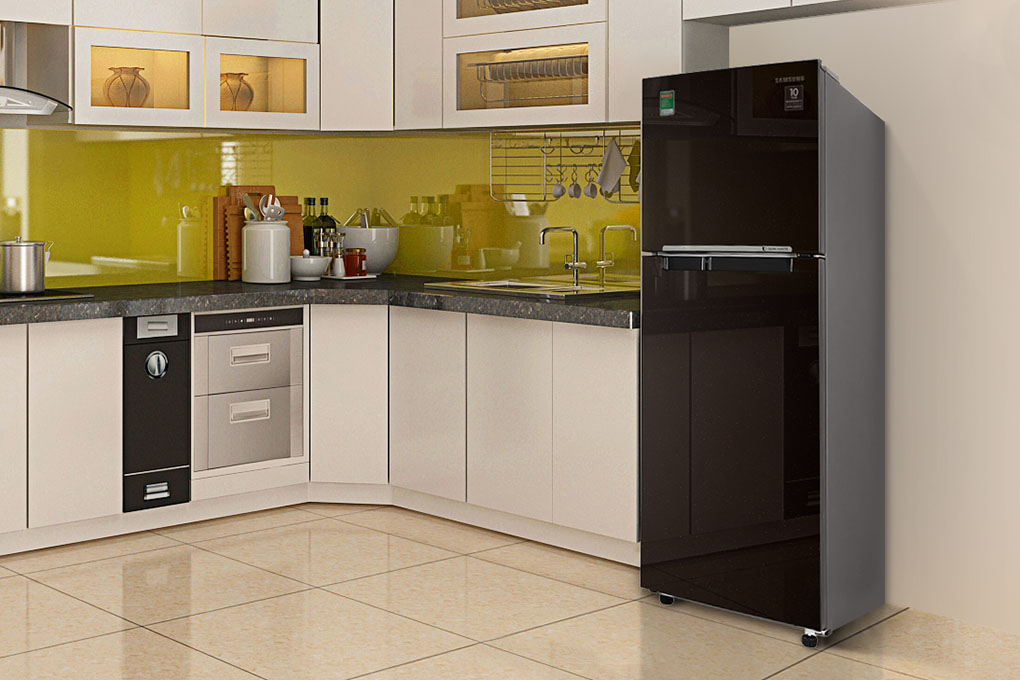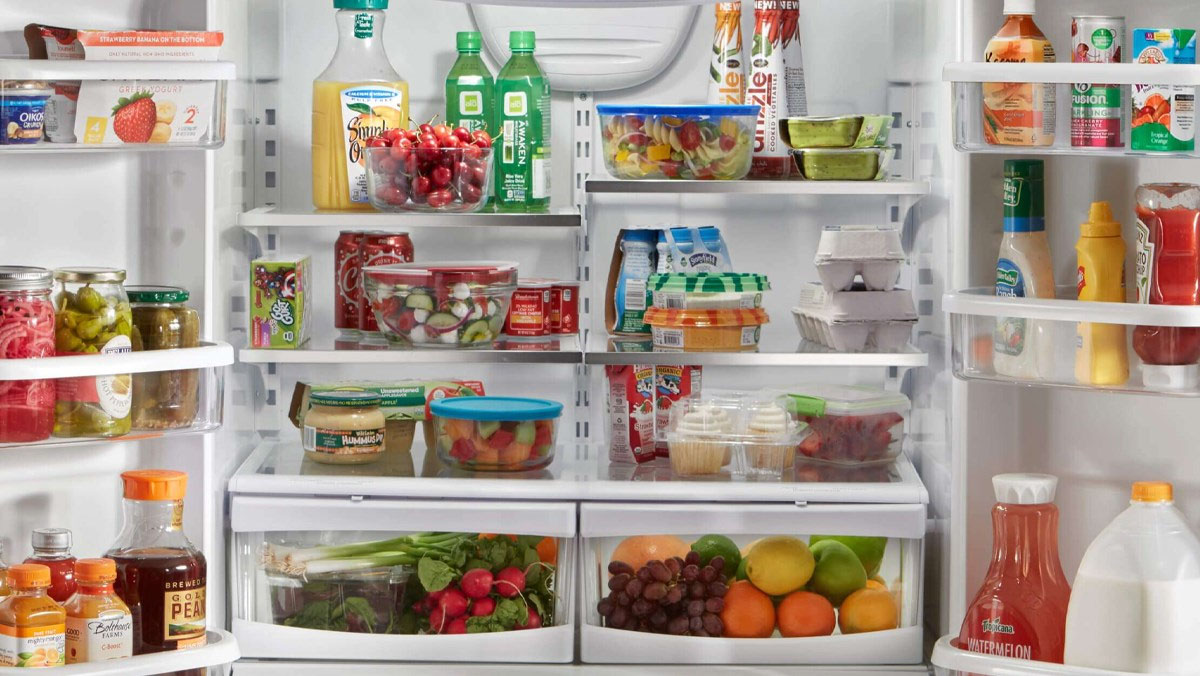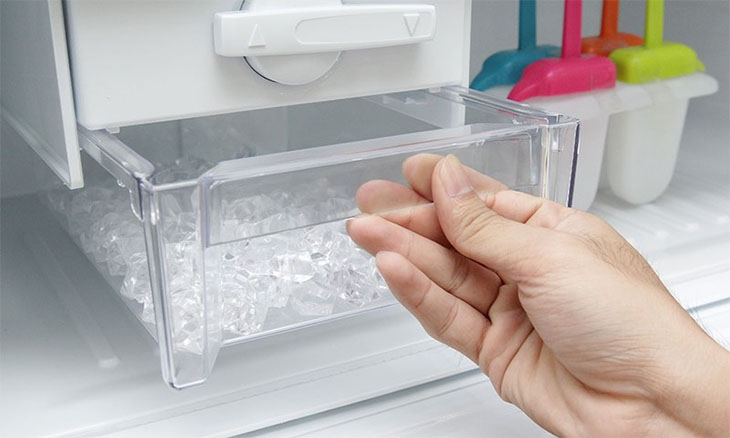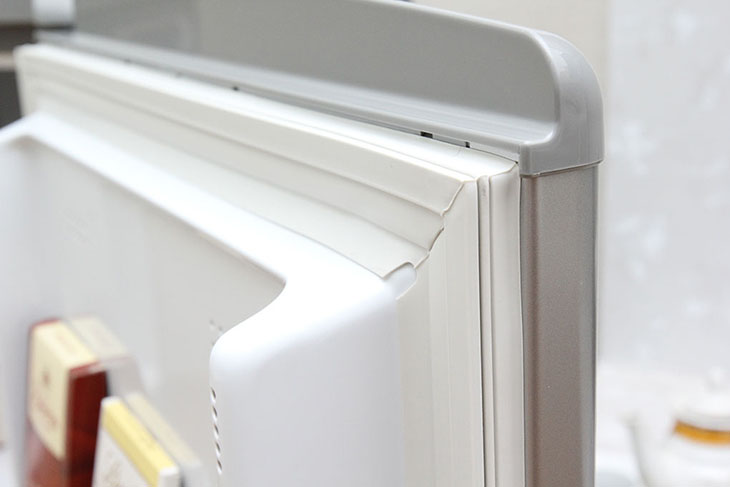1Keep your fridge away from heat sources and don’t push it against the wall
It’s best to keep your fridge away from heat sources such as gas stoves, rice cookers, microwaves, and direct sunlight. Also, don’t push your fridge right up against the wall as it needs space to dissipate heat, helping it work more efficiently. This is especially important because the cooling cables behind the fridge need cool air to keep the fridge from using too much energy and breaking down quickly.

Samsung Inverter 236L Refrigerator RT22M4032BY/SV
2Adjust your fridge temperature accordingly
Depending on the outdoor temperature, you can adjust your fridge temperature up or down. Avoid setting the temperature too high as it consumes a lot of energy. During colder months, you can set the temperature to level 3 and increase it to level 4 on hotter days to save energy.
Additionally, you can adjust the temperature for each compartment, including the freezer, fridge, and vegetable drawer. The ideal temperature for the freezer is around -18 degrees C, while the fridge should be kept at 2 – 4 degrees C to maintain freshness.

LG Inverter 393L Refrigerator GN-B422WB
3Don’t leave the fridge door open for too long
Cold air escapes when the door is open, causing the compressor to work harder and consume more energy to cool the fridge again. So, avoid leaving the door open for too long, and remember to close it carefully, ensuring the door seal fits snugly against the fridge body.

4Use glass or ceramic containers for food storage
Glass or ceramic food storage containers help maintain the cold temperature in the fridge better, ensuring food quality and energy efficiency. Use ceramic plates or bowls to store food. Arrange the food to fill the containers adequately to allow for better cold air circulation, helping you save a significant amount on your electricity bill each month.

5Don’t put hot food in the fridge
Hot food will increase the temperature inside the fridge, causing the compressor to work at a higher capacity to balance the temperature. If you frequently put hot food in the fridge, it will also reduce the fridge’s lifespan due to the frequent activation of the motor to quickly cool the fridge.

6Keep a moderate amount of food in the fridge
Having a moderate amount of food in the fridge helps maintain the cold temperature through the exchange of cold air between the food items. If the fridge is too empty, the cold air exchange will be less effective, wasting energy. To counter this, you can slightly lower the temperature so that the compressor works less.
On the other hand, having too much food in the fridge is also not advisable as it can block the cold air vents. This will increase the fridge’s temperature, affecting food quality.

7Turn off the automatic ice maker when necessary
Some fridges have an automatic ice maker that quickly provides ice cubes for your use. However, to save energy, you can turn off this feature when not needed and make ice cubes the traditional way in the freezer compartment.

8Regularly check the door seal
The rubber seals (also known as fridge gaskets) can become worn over time, causing cold air to escape. To test them, place a thin piece of paper between the door and the fridge. If you can easily pull the paper out, it’s time to replace the seals. Also, remember to keep them clean to prevent dust and dirt buildup that can affect the door seal.

9Regularly clean the condenser coils
Condenser coils dissipate heat from the refrigerant outside the fridge. Dirty coils can lead to inefficient heat dissipation, causing higher energy consumption. Clean the condenser coils regularly, at least every six months or once a year.
At the same time, clean and vacuum the area behind the fridge to prevent dust buildup that can block the system. If you have pets, clean this area more frequently as it is an ideal place for pet hair to accumulate.

10Clean your fridge regularly
It’s recommended to clean your fridge regularly, approximately every 2-3 months, to prevent bacterial growth. This practice also helps prevent dust buildup on the cold air vents, reducing the need for the compressor to work harder to maintain the temperature and saving energy.


 We hope these tips help you save a significant amount of electricity each month! Develop good habits when using your fridge to prolong its lifespan, save money, and protect your family’s health.
We hope these tips help you save a significant amount of electricity each month! Develop good habits when using your fridge to prolong its lifespan, save money, and protect your family’s health.

































